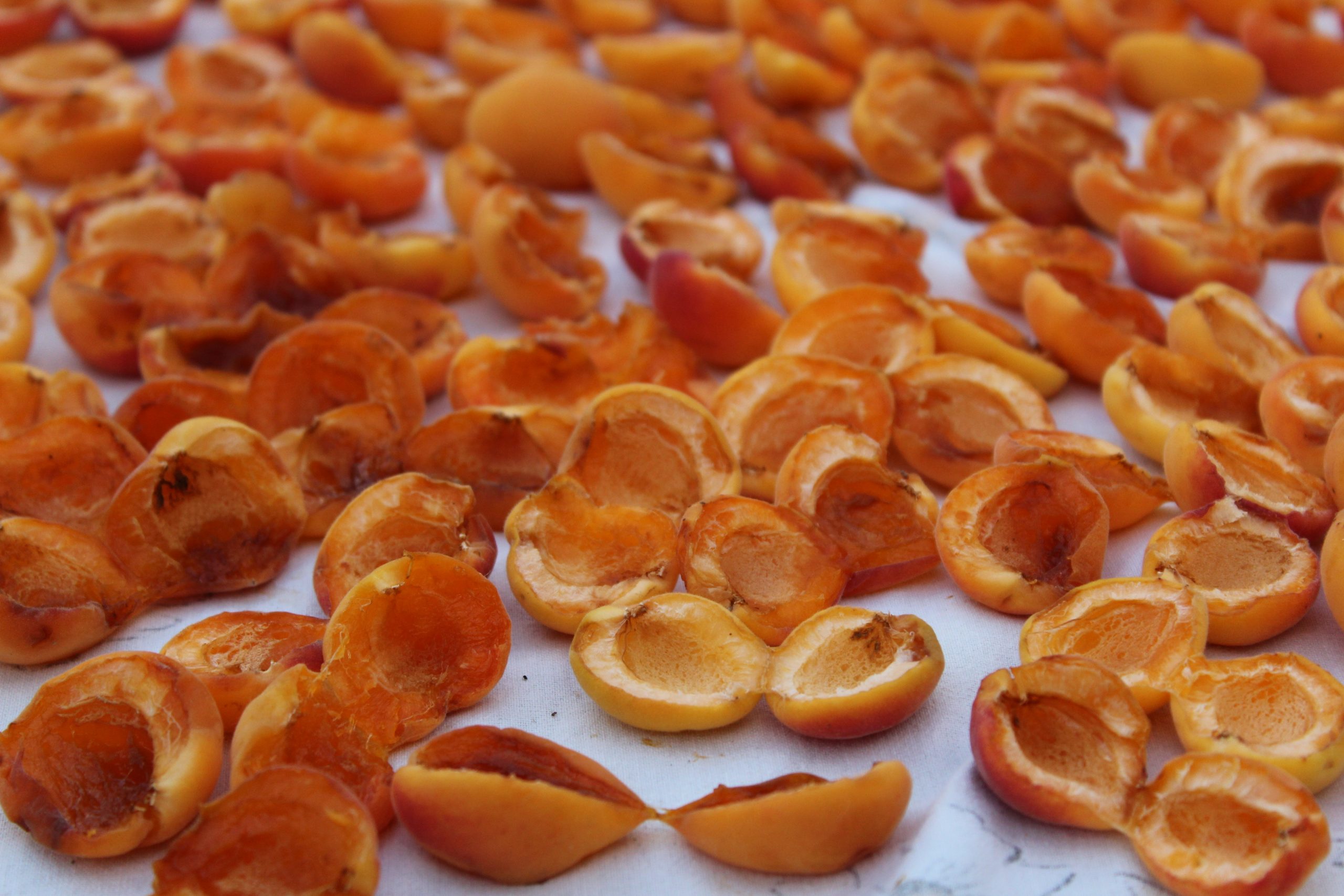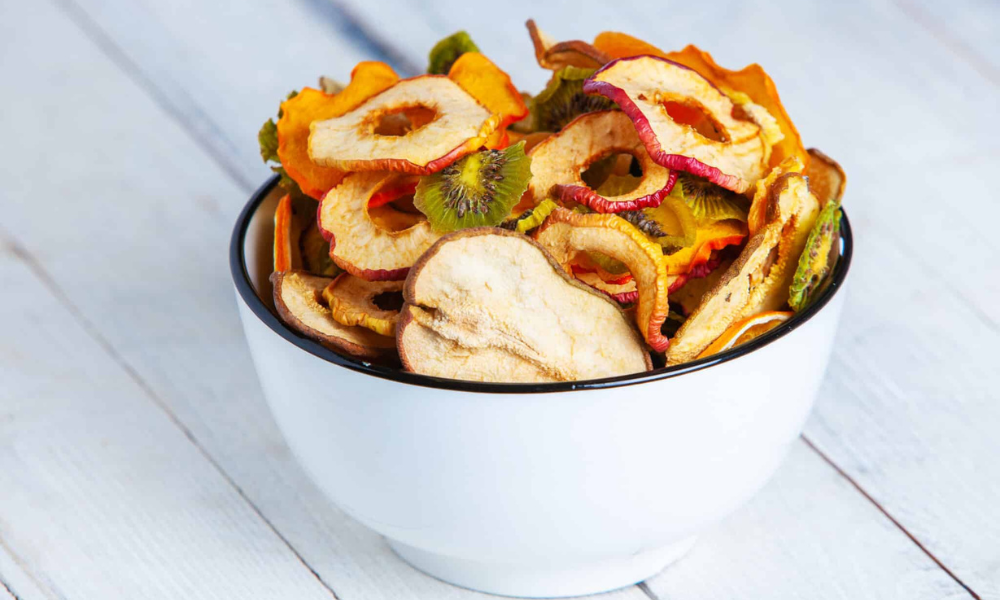Freeze drying is used to dry food items such as meats, fish, and other products. It is different from conventional dehydration methods that evaporate water using heat. Instead, freeze drying involves lowering pressure to remove ice by sublimation.
Freeze drying is also a good way of concentrating substances with low molecular weights. These substances cannot be removed through a filtration membrane. It is often used to improve the shelf life of a product. The freeze-drying process affects the quality and efficiency of a freeze-dried product, including the freeze-drying rate, freezing time, temperature, and pressure.

What does Freeze Dried Mean?
Meat that has undergone a procedure known as freeze-drying and had nearly all of its moisture removed is referred to as free-dried meat. The meat is frozen before the frozen water (ice) is sublimated and removed with a vacuum.
Because it is portable, shelf-stable, and simple to store, freeze-dried beef is a preferred option for camping, trekking, and emergency preparedness packs. The meat can also be rehydrated by being given more water. Rehydrated meat is a suitable substitute for fresh or canned meat because it retains its original flavor and texture.
Additionally, freeze-dried beef is used to create pet food, which can contribute to creating a high-quality protein source.
Free-dried meat is a wonderful choice for those who want to save meat for an extended period or want a portable solution for camping or hiking.
What are the Different Methods of Freeze Drying Food?
A technique for food preservation called freeze-drying involves freezing and sublimating food to remove the moisture content. For the most part, freeze-drying involves two techniques:
- Batch Food is typically freeze-dried using this technique. To do this, the food must first be frozen before being placed in a vacuum chamber where the temperature and pressure are increased while the pressure is decreased. This removes the frozen water (ice) from the food by sublimation (transforming a solid into a gas).
- Continuous Freeze-drying: This process, often called “freeze-drying in motion,” entails freezing the food first, then passing through a series of vacuum chambers where the pressure and temperature are steadily raised. This technique enables a quicker and more effective freeze-drying procedure.
Both techniques are frequently applied in industrial settings, such as food processing and packaging industries, and both rely on a high level of technical know-how and specific equipment.
The food must be wrapped to withstand the low temperatures and high vacuum present during the procedure, and it is vital to remember. The starting quality of the food, the procedure, and the packaging all affect the quality of the finished product.
How do you Freeze Dry at Home?
Freeze-drying can be done at home, but it takes a lot of time, money, and specialized equipment. The basic steps of the procedure are as follows:
- Get the food ready: To guarantee even freeze-drying, the food needs to be cut or diced into small, even pieces. To maintain color and texture, blanching or preliminary cooking may be required.
- Freeze the food quickly: On a baking sheet or pan, arrange the prepared food in one layer and freeze it until it is completely firm. This step is crucial to avoiding the formation of ice crystals in the food.
- When the food is frozen, please place it in the freeze-drying chamber to finish Drying.
- Beginning the vacuum pump to produce a vacuum, take the air out of the chamber.
- Start the freezing and drying process: The frozen water (ice) in the food progressively sublimates (changes from a solid to a gas) and is expelled from the meal as the temperature in the chamber slowly rises.
- Packaging and keeping the freeze-dried food: Pack the food in airtight jars or vacuum-sealed bags after the freeze-drying procedure is finished. The freeze-dried food should be kept in a cool, dry area.
It’s crucial to remember that freeze-drying at home is a time-consuming process that necessitates a substantial investment in specialist equipment, such as a freeze-drying machine, vacuum pump, and chamber. To retain the food’s quality, handling and packaging it properly is crucial.
Is Freeze Dried Food the Same as Frozen?
Food that has been frozen at or below 0°F will stay fresh longer. The food’s texture, flavor, and nutritional content are preserved since this reduces the activity of bacteria and enzymes. Food that has been frozen should be consumed shortly after it has been thawed. It can be kept frozen for several months in a freezer.
On the other hand, freeze-drying is a method of food preservation that involves freezing the food first, followed by lowering the pressure in a vacuum chamber to almost eliminate the moisture. As a result of this procedure, the frozen water in the meal sublimates and is eliminated. The food is subsequently put into vacuum-sealed or airtight containers or bags. Long-term storage is possible while maintaining the food’s texture, flavor, and nutritional content.
In conclusion, while freezing and freeze-drying are preservation techniques that aid in extending the shelf life of food, freezing maintains the food in a solid state. It necessitates freezer storage, whereas freeze-drying virtually completely removes moisture from the food and allows for longer storage at room temperature.
Is there an Alternative to Freeze Drying?
Yes, there are methods other than freeze-drying for food preservation, such as:
- Via heating food to a high temperature and then sealing it in an airtight container, you can preserve it by canning. Fruits, vegetables, and meats can be successfully preserved with this technique.
- Dehydration: By exposing food to heat and airflow, dehydration eliminates moisture from the food. Fruits, vegetables, and meats can be preserved with this technique, which can be carried out in a dehydrator, an oven, or even a sunny outdoor location.
- Food is preserved through smoking by being exposed to smoke from burning wood. Fish, meats, and cheeses can all be preserved using this technique.
- Food is preserved through fermentation, a process that promotes the growth of advantageous microbes. Vegetables, fruits, and dairy products can all be preserved with this technique.
- Food is preserved using the salt-curing technique by being submerged in a salt-and-water solution known as brine. Fish, meats, and other proteins can be preserved using this technique.
- By removing air from the packing, vacuum sealing is a technique for preserving food that prevents the growth of germs and enzymes. Fruits, vegetables, meats, and other items can all be preserved with this technique.
The most effective technique will depend on the type of food being preserved and the desired result because each of these procedures has pros and cons.
How Long will Freeze-Dried Food Last?
When properly kept, freeze-dried food can last for a very long period. Depending on the food’s kind and packaging, freeze-dried food’s shelf life can change, but it is typically thought to be many years.
Maintaining the shelf-life of freeze-dried food requires proper packaging. Foods stored in vacuum-sealed bags or airtight containers can last for several years. These containers or bags must be kept in a cool, dry location away from heat and sunlight.
Although the nutritional content of freeze-dried foods may diminish over time, as long as they are stored properly, they won’t deteriorate or go bad. Food that has been frozen-dried must also be rehydrated before consumption, and it’s crucial to look for any obvious signs of rotting before doing so.
Check the box for manufacturer-provided information; they frequently include details on freeze-dried food’s shelf life and storage requirements.
How to Identify Freeze Dried Food is Spoiled?
When stored properly, freeze-dried food can last for many years, but it’s still crucial to look for symptoms of deterioration before eating it.
- The aroma of fresh freeze-dried food should be subtle and nearly pleasant. Food should be thrown away if it smells strongly sour, rotten, or spicy. Following are some indicators that your freeze-dried food has gone bad:
- Appearance: Fresh freeze-dried food should be uniform in terms of texture and color. The food should be thrown out if it contains mold, discoloration, or an irregular texture.
- Package integrity: Inspect the packing for any holes, rips, or other damage; if the seal is broken, air and moisture can enter, leading to deterioration.
- Check the package’s expiration date before consuming the food at all times. Food that has gone over its expiration date needs to be thrown away.
When in doubt, it is recommended to toss the food; when it comes to food safety, it is always better to be safe than sorry.
To preserve the quality and shelf life of freeze-dried food, it is crucial to store it correctly, away from direct sunlight in a cold, dry environment. Before eating food, always look for symptoms of deterioration.
What are the Side Effects of Consuming Spoiled Freeze Dried Food?
Food poisoning, which can result in various symptoms similar to consuming rotten fresh food, can be brought on by eating defective freeze-dried food. Depending on the kind of bacteria or germs that contaminated the meal, the symptoms may differ; however, some typical ones include:
- Consuming damaged freeze-dried food may make you nauseous and hurt your stomach.
- Consuming damaged freeze-dried food can result in diarrhea, which, if not properly handled, might induce dehydration.
- Stomach cramps: Eating damaged freeze-dried food may result in cramps and pain in the abdomen.
- Headaches: Besides overall malaise, food poisoning can result in headaches.
- Fever: Eating damaged freeze-dried food might make you feel sick as your body battles the bacteria-induced infection.
- Vomiting can result from eating spoiled freeze-dried food, which can further dehydrate the body.
It’s important to note that some people may not experience symptoms at all but still can be carriers of the infection.
You should get medical help as soon as possible if you think you may have eaten spoiled freeze-dried food and are showing signs of food poisoning.
Investigations were conducted on the physical and chemical characteristics of Trachurus trachurus (horse mackerel) and a food product in the presence and absence of natural antioxidants. We looked at the primary, secondary, and tertiary oxidation products of the freeze-dried horse mackerel product held at room temperature (22 °C) utilizing the peroxide value (PV), thiobarbituric acid reactive substances (TBARS), and hexanal concentration. Natural antioxidants were employed to reduce the oxidation rate and enhance food’s nutritious value. These included rosemary (250 mg kg1), vitamin E + vitamin C + citric acid (250, 250, 100, 250 mg kg1, respectively), and citric acid (250, 250, 100, 250 mg kg1, respectively).
Conclusion
Freeze-dried food was developed by the indigenous people of the Andes Mountains, who preserved tubers and potatoes in the cold, high-altitude air of the Andes. This allowed them to keep their food safe all year long.
AMES Research Center capitalized on the growing public interest in space travel and began creating freeze-dried food for astronauts. As the freeze-drying technique evolved, it was also used to make foods for astronauts. The first freeze-dried ice cream was launched onboard Apollo 7 in 1968.

